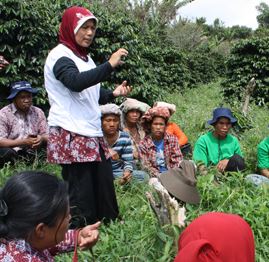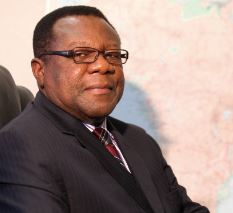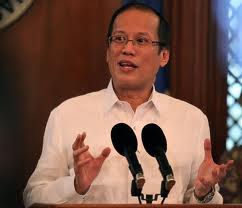[vc_row][vc_column][vc_column_text]
Asia Pacific
 Asia-Pacific (excluding the Middle East) is the most populous region. In 2018, it had over 3.98bn people spread over 47 countries. It had the largest total GDP of the regions in 2018 at 28.8 trillion USD. Average GDP per capita was 13,454 USD. Total exports were 8 trillion USD. Civilisation began in China around 8,000 BC. By around 2200 BC, the first imperial dynasty had begun: the Xia. The last dynasty ended in 1912. The Chinese empire gained great wealth and spread its influence through trade that reached across the continent via the Silk Roads to the Middle East and Europe beginning around 200 BC. Meanwhile in India, civilisation began in the Indus valley around 2300 BC. In the 4th century, Buddhism began to spread to East Asia and had reached Japan and South East Asia by the 6th century. In the 7th century Islam emerged, and quickly spread to Central Asia, northern India, and Western Asia along the Silk Road. Arab traders also helped spread Islam throughout South East Asia. Between the 13th and 15th centuries, the Mongols invaded China, central Asia, and northern India. Divine Winds prevented Kublai Khan’s invasion of Japan. In the 16th century, Portuguese traders arrived in India, East Asia, and South East Asia and built a commercial empire. The Dutch quickly superseded them in South East Asia. Britain, France and Spain also realised colonial ambitions in the region. Britain took control in India and defeated China in the Opium Wars, gaining Hong Kong as a result. It also discovered and settled Australia and New Zealand in the 18th century. France gained control of Indochina and settled several Pacific islands. In 1853, Commodore Perry forced Japan out of isolation. The Meiji restoration industrialised Japan and brought it to the status of a world power with the defeat of the Russians in 1905. Imperial Japan extended into the Korean Peninsula and Manchuria. After WW2 they invaded South East Asia and the Pacific. After WW2, Japan again led the way with the Japanese economic miracle, which was quickly replicated by South Korea, Taiwan, and other Asian nations. Also, after WW2, the last vestiges of colonialism were eventually swept away as the nations of Asia gained independence. China became communist in 1949. By the 1970s, China slowly liberalised their economy. It has now overtaken Japan to become the second largest economy in the world and is likely to overtake the US soon. Its Belt and Road initiative was announced in 2013. It has increased Chinese influence throughout Asia and beyond. In 1967, the Association of South East Asian Nations (ASEAN) was formed as the countries sought to build stronger political and economic relationships. In 1989, the Asia-Pacific Economic Cooperation (APEC) forum was founded. By 2018, this had led to the Comprehensive and Progressive Agreement for Trans-Pacific Partnership (CPTPP) free trade agreement. The 11 signatories are Australia, Brunei, Canada, Chile, Japan, Malaysia, Mexico, New Zealand, Peru, Singapore, and Vietnam. The Regional Comprehensive Economic Partnership (RCEP) free trade agreement is expected to be signed in 2020. In addition to the Asian and Pacific countries from the CPTPP it also includes China, Cambodia, India (to be determined), Indonesia, Laos, Myanmar, Philippines, South Korea and Thailand.[/vc_column_text][/vc_column][/vc_row][vc_row][vc_column][vc_column_text]
Asia-Pacific (excluding the Middle East) is the most populous region. In 2018, it had over 3.98bn people spread over 47 countries. It had the largest total GDP of the regions in 2018 at 28.8 trillion USD. Average GDP per capita was 13,454 USD. Total exports were 8 trillion USD. Civilisation began in China around 8,000 BC. By around 2200 BC, the first imperial dynasty had begun: the Xia. The last dynasty ended in 1912. The Chinese empire gained great wealth and spread its influence through trade that reached across the continent via the Silk Roads to the Middle East and Europe beginning around 200 BC. Meanwhile in India, civilisation began in the Indus valley around 2300 BC. In the 4th century, Buddhism began to spread to East Asia and had reached Japan and South East Asia by the 6th century. In the 7th century Islam emerged, and quickly spread to Central Asia, northern India, and Western Asia along the Silk Road. Arab traders also helped spread Islam throughout South East Asia. Between the 13th and 15th centuries, the Mongols invaded China, central Asia, and northern India. Divine Winds prevented Kublai Khan’s invasion of Japan. In the 16th century, Portuguese traders arrived in India, East Asia, and South East Asia and built a commercial empire. The Dutch quickly superseded them in South East Asia. Britain, France and Spain also realised colonial ambitions in the region. Britain took control in India and defeated China in the Opium Wars, gaining Hong Kong as a result. It also discovered and settled Australia and New Zealand in the 18th century. France gained control of Indochina and settled several Pacific islands. In 1853, Commodore Perry forced Japan out of isolation. The Meiji restoration industrialised Japan and brought it to the status of a world power with the defeat of the Russians in 1905. Imperial Japan extended into the Korean Peninsula and Manchuria. After WW2 they invaded South East Asia and the Pacific. After WW2, Japan again led the way with the Japanese economic miracle, which was quickly replicated by South Korea, Taiwan, and other Asian nations. Also, after WW2, the last vestiges of colonialism were eventually swept away as the nations of Asia gained independence. China became communist in 1949. By the 1970s, China slowly liberalised their economy. It has now overtaken Japan to become the second largest economy in the world and is likely to overtake the US soon. Its Belt and Road initiative was announced in 2013. It has increased Chinese influence throughout Asia and beyond. In 1967, the Association of South East Asian Nations (ASEAN) was formed as the countries sought to build stronger political and economic relationships. In 1989, the Asia-Pacific Economic Cooperation (APEC) forum was founded. By 2018, this had led to the Comprehensive and Progressive Agreement for Trans-Pacific Partnership (CPTPP) free trade agreement. The 11 signatories are Australia, Brunei, Canada, Chile, Japan, Malaysia, Mexico, New Zealand, Peru, Singapore, and Vietnam. The Regional Comprehensive Economic Partnership (RCEP) free trade agreement is expected to be signed in 2020. In addition to the Asian and Pacific countries from the CPTPP it also includes China, Cambodia, India (to be determined), Indonesia, Laos, Myanmar, Philippines, South Korea and Thailand.[/vc_column_text][/vc_column][/vc_row][vc_row][vc_column][vc_column_text]
Wang Meng: A Champ Tumbles and Falls on Her Way to the Top
IFC, ECOM Training Helps Women Farmers Boost Income, Productivity
Emmanuel Nnadozie, ACBF: Africa – BRICS Partnership Is Growing Rapidly
Fata Morgana in the High Alps: Musings on Davos
IFC Champions Water Efficiency in China’s Textile Industry
Farrukh Khan, Diwan Advocates: India Joins Madrid System of Trademarks – The Effects
CFI.co Meets the President and CEO of SunTec Business Solutions: Nanda Kumar
DEG: Germany Eyes Future Markets Beyond the BRICS
World Bank Response to Philippines Typhoon Disaster
UN Concern over Job Creation for Youth in Least developed Nations
Grant Thornton Hong Kong: Managing Innovative Technologies – CloMoSo
Muhammad Yunus: Enabling the Poor to Rise and Prosper
[/vc_column_text][/vc_column][/vc_row]
Loading, Please Wait!
This may take a second or two.





























































































